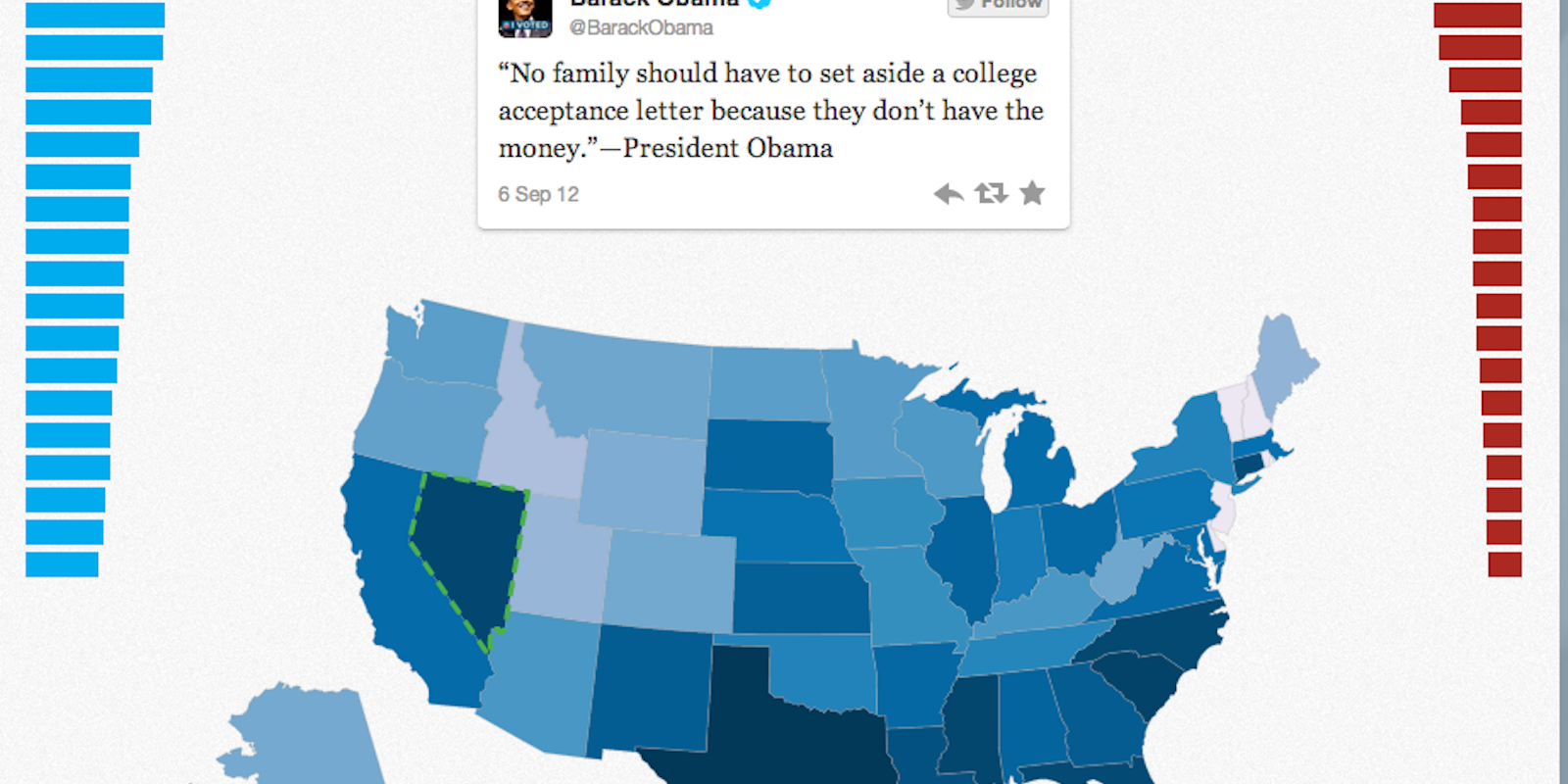In the last few months, sites like Facebook and Twitter have come up with numerous ways to view the election via social media. But Twitter’s newest offering, the Political Engagement Map, could be one of the most revealing. Released on Thursday, the map shows the popularity of tweets from both President Barack Obama and Mitt Romney—by state.
Each tweet is divided by the subjects it addressed. What’s especially revealing is what topics come up most and which messages get retweeted the most. If you were to listen to Obama or Romney out on the campaign trail, you would think that restoring the economy is the single most important issue to voters—and it’s certainly up there—but people are certainly interested in more than one issue.
Look at Nevada, for example. Every time Romney swings through the state, he is sure to note how bad the economy is and how that’s the most important issue for voters there. But when looking at what issues are the most retweeted there, the economy comes in fourth, behind education, health care, and energy/environment.
The database is searchable by tweet, state, and topic. On the map, the darker the state, the more that state retweeted.
In some instances, however, the states do line up with the topics you would expect. Ohio, for example, is most concerned with the economy. New Yorkers are most concerned about abortion, terrorism, and foreign affairs.
“Throughout the 2012 election season, the biggest topics and emerging trends have played out on Twitter, offering an extensive dataset for our Analytics team to explore,” the company wrote on a blog about the new map. “A great deal of media and campaign attention focuses on statewide polling, so we’ve been particularly interested in how users engage with political content on a statewide level.”
The new map offers yet another tool in looking at how social media is reflecting the 2012 race. A tool that is considerably more useful than previous ones when trying to figure out what issues are driving the conversation across the country. It also better reflects the actual electoral process—even if one candidate is up or down overall, what really matters is how they are doing at the state level. Thank the electoral college for that.
But with four days left in this campaign, is the Twitter map too little, too late? Or is it a sufficient preview of how social media may play a role in the next presidential election?
Image via Twitter


